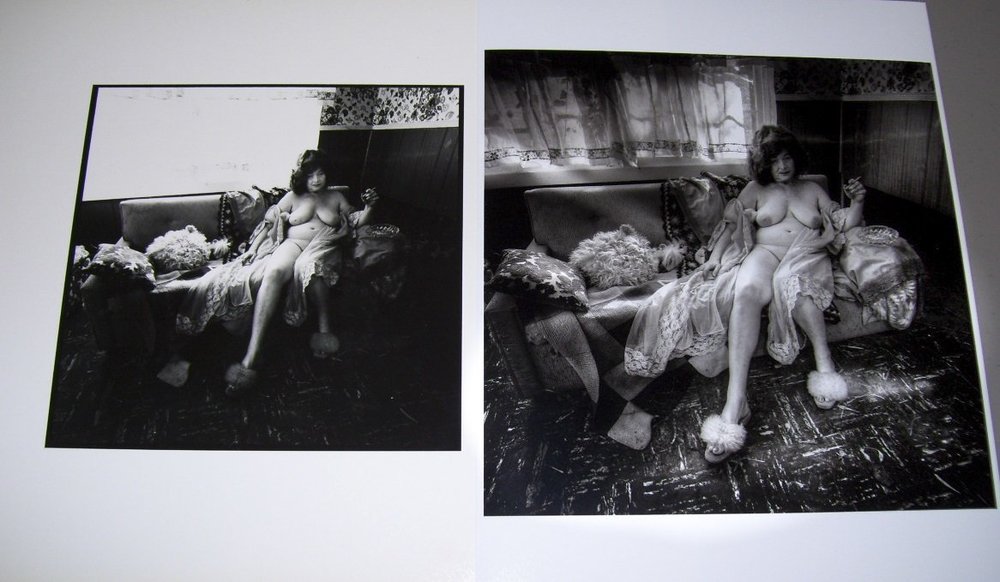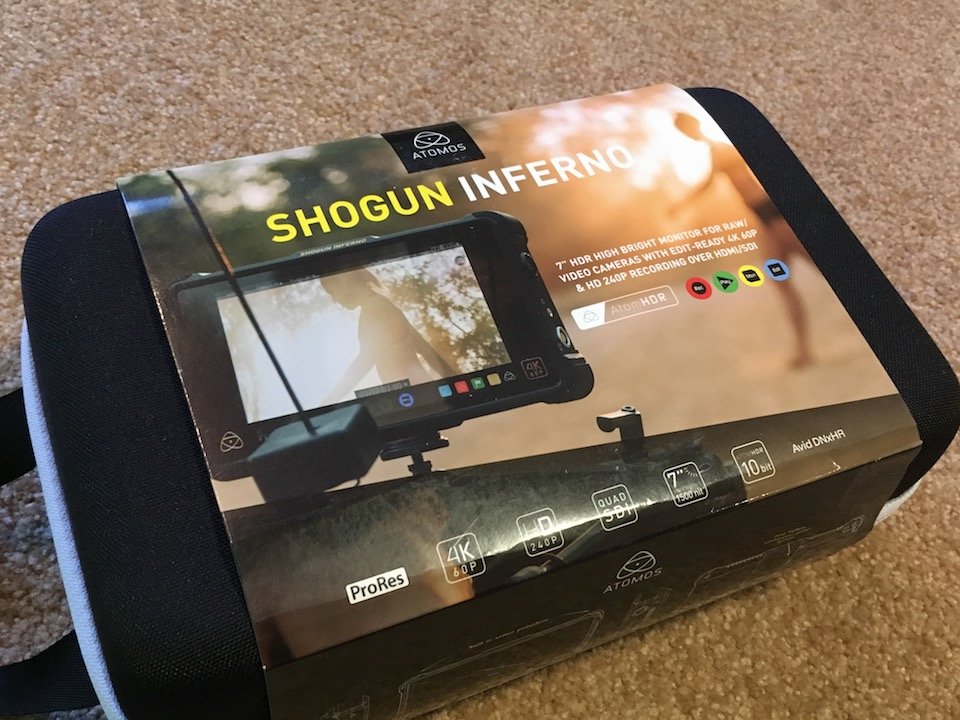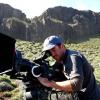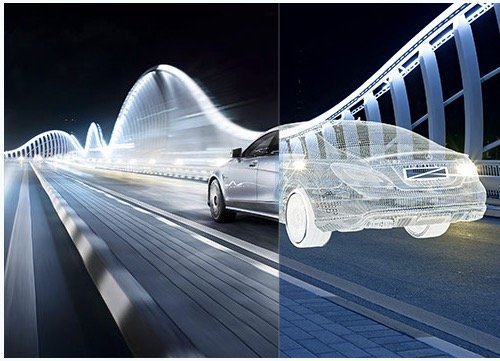Search the Community
Showing results for tags 'hdr'.
-
https://youtu.be/rgTz3YY7Hpk I've recently upgraded to a macbook pro XDR display + my Pocket 6k allows me to shoot & grade videos in HDR. Check it out what do you think is the technology ready or is good quality HDR still reserved for mastering suites like Dolby? Any experts know as well how to shoot an LCD screen and avoid the refresh line? Is is the shutter angle setting and in that case what angle should I use in the future? Constructive feedback is appreciated!
-
- pocket cinema camera
- hdr
-
(and 1 more)
Tagged with:
-
Ansel Adams devised a 11 Zone system. Can this be equated to 11 exposure zones ? Current film or Digital sensors are rated as 15 stops of dynamic range. Does that mean 15 Zones or 15 Stops fit into 11 Zone system (like 1.36 stop per zone) ? HDR output is like 20 stops of dynamic range. Does it mean 20 stops fit into 11 zones ? And what is exposure latitude in relation to these ? Can some one please explain this ?! some times it is confusing.
- 1 reply
-
- zonesystem
- stops
-
(and 3 more)
Tagged with:
-
This is a single image HDR from a 6x6 BW negative . It is a 3 exposure HDR done in post processing (-1,0,+1,) and it has additional contrast grading done in Lightroom. It is a good example of what can be achieved with single image HDR and contrast grading. Single image HDR is often looked down upon as not 'real HDR' since traditional HDR is done in-camera with multiple exposures. While it is true single image HDR is not as good as traditional, multi exposure HDR, you can still benefit from single image HDR as many times it is not practical to shoot multiple exposures of a subject. Sunlit Slipper 1974 L.A. - photo and post processing by D.D. Teoli Jr.
- 5 replies
-
- hdr
- contrast grading
-
(and 2 more)
Tagged with:
-
Hello, When you are metering a scene, do you meter for the camera's dynamic range, or for the 6 stops in SDR or the 13+ stops in HDR? For instance, if your camera has 6 stops of highlight dynamic range, and 8 stops of shadow dynamic range, do you keep everything in your scene between those 14 stops or do you keep everything in between the lets say 6 stops of standard dynamic range? I hope this question makes sense! Thanks in advanced to anyone who can help! - Matt
-
I purchased an Atomos Shogun Inferno just before the holidays, and didn't take a look at it until after the holidays as I built a new mirrorless camera package. Turns out that the monitor is just too large for the camera ergonomically speaking, at least for me. So I'm selling it and preparing to buy a smaller one. I used to own the original Shogun so I bought the newer Inferno model by default really (I also wanted the 1500nit HDR 10bit screen with ProRes RAW capability). It was only opened and never used, never taken out of my office. All original packaging and items included. The full 2 year USA manufacturers warranty started on November 30, 2018 and is transferrable to the new owner. It's an incredible monitor in perfect new condition, it was only opened up and looked at. The Shogun Inferno sells new at $1295. Obviously I can't sell it for what I paid, but this is not a low ball item, it's the latest Shogun Inferno in unused mint condition. 4K 60P SDI HDMI ProRes RAW Recorder. Please find the eBay link below with more details. Can ship within Canada as well. https://www.ebay.com/itm/173765009092?ssPageName=STRK:MESELX:IT&_trksid=p3984.m1555.l2649
-
Hi, I'll be shooting a tv serial, contemplating the HDR. That means, shooting digital as if it was a negative, thinking of future technology. As today you can buy an HDR tv, there is no content for HDR yet. So they are trying us, dp's, to start thinking in HDR when shooting digital.. Any expierence?
-
Does someone know, were I can I get more info about HDR or Dolby Vision. not referred to still photograhpy, but yes to tv series...
-
Panavision, a world-class provider of state-of-the art optics, camera systems, lighting, filters, and post production services, will showcase an array of advancements in optics at their Lens Bar at EnergaCamerimage International Film Festival of Cinematography, which runs November 10-17 in Bydgoszcz, Poland. Panavision will also host a conversation with Camerimage Lifetime Achievement recipient Witold Sobocinski, PSC, and explore the benefits of an HDR workflow. Panavision’s workshops will be held on Nov. 13, beginning with the much-anticipated conversation with Sobocinski in the MCK at 11.00. The renowned cinematographer’s credits include “Frantic,” the Oscar®-nominated “The Promised Land,” “The Wedding,” and “O-Bi, O-Ba – The End of Civilization.” He will be joined by his grandsons Piotr Sobocinski Jr. (“Bogowie”) and Michal Sobocinski (“The Art of Loving”) who carry on the family’s cinematic legacy. At 14:00, Panavision will present “Cinematic Change: HDR for Cinematographers.” With 4K HDR as the viewing standard, Panavision experts will discuss how cinematographers can remain in control of their images throughout the workflow based on knowledge of the various post-production options. In the Opera Nova, Panavision’s popular Lens Bar will include demonstrations of the latest large-format and anamorphic lenses available, as well as previews of upcoming, innovative glass options: PanaSpeed – A large-format update of the classic Primo look. At T1.4, PanaSpeed are the fastest large-format lenses available today. T Series – A set of unique anamorphic glass that includes high contrast, well-balanced aberration control, excellent glare resistance, tightly controlled anamorphic squeeze ratio, and minimal breathing. H Series – A traditionally designed spherical lens set with a glamorous, rounded, soft roll-off, giving a pleasing tonal quality to the skin. Created with true vintage glass and coating, these lenses offer slightly elevated blacks for softer contrast. High speeds separate subject and background with a smooth edge transition, allowing subject to appear naturally placed within the depth of the image. Ultra Vista – Coming in 2019, this lens is a series of large-format anamorphic optics. Using a custom 1.6x squeeze, Ultra Vista covers the full height of the 8K sensor in the DXL and presents an ultra-widescreen 2.76:1 aspect ratio along with a classic elliptical bokeh and Panavision horizontal flare. Primo X - Also available in 2019, this lens will make its mark as the first cinema lens specially designed for use on drones and gimbals. They are fully sealed, weather proof, and counterbalanced to be aerodynamic, and able to easily maintain a proper center of gravity. Primo X lenses come in two primes – 14mm (T3.1) and 24mm (T1.6) – and one 24-70mm zoom (T2.8). Additionally, Panavision’s Millennium DXL2 8K camera will be on display for hands-on demonstrations. A premier, large-format imaging ecosystem, the DXL2 offers 16 stops of dynamic range with unmatched shadow detail, a native ISO setting of 1600, and 12-bit ProRes XQ up to 120 fps. At 10 pounds (4.5 kilos), it is the lightest large-format studio camera available, offering wireless controls, a directly editable workflow option (D2E), and Light Iron Color 2 (LiColor2), among other features. The DXL2 has become a top camera of choice for cinematographers and camera crews working on features, television, commercials and music videos. Panavision will also share the newly created DXL-M accessory kit, available in Q4 2018. Designed to work with RED Digital Cinema DSMC2 cameras, it delivers the popular features of the DXL to RED MONSTRO, GEMINI, and HELIUM sensors, such as the DXL menu system (via an app for the iPhone), LiColor2, motorized lenses, wireless timecode (ACN), and the Primo HDR viewfinder. Panavision LCND will make its European debut at Camerimage. The cinema’s first dynamically adjustable liquid crystal neutral density filter instantly adjusts up to six individual stops with a single click or ramp – a significant departure from traditional approaches to front-of-lens filters, which require carrying a set and manually swapping individual NDs based on changing light. LCND starts at 0.3 and goes through 0.6, 0.9, 1.2, 1.5, to 1.8. It is expected to be available in 2019. Panalux, a Panavision company, will also be set up in the Opera Nova providing demonstrations of a variety of lighting setups and formats made possible with a wide range of lighting equipment and control systems. Award-winning LEE Filters, also a Panavision company, will showcase their range of next-generation filters, including their latest products, the Zircon Filter range for LED control and the CineND, neutral density.
-
- cinematography
- 8K
-
(and 2 more)
Tagged with:
-
Not sure where to post this. News seemed like the obvious place but I can't post there but this seems of interest to everyone here as it is about one possible future for Theatrical presentation. Giant LED displays for the cinema: https://www.redsharknews.com/business/item/4751-samsung-launches-hdr-led-cinema-screen Freya
- 13 replies
-
I bumped onto this a few weeks ago: http://www.premiere.fr/Cinema/News-Cinema/Pourquoi-il-faut-voir-La-La-Land-en-EclairColor It is in French, but I hope you will understand it easily or use Google Translate to read the article. The comment below seems to imply that the article is a good marketing piece. Or perhaps that’s what I inferred. What do you think of EclairColor?
- 3 replies
-
- darius khondji
- hdr
-
(and 1 more)
Tagged with:
-
We are a new exciting CGI based stock company specializing in advertising. We are looking for Camera Operator/ owners, Cinematographers who have existing 4k footage. Let us sell it for you. if your footage is siting somewhere on a hard drive it's not bringing you revenue it should. We are extremely established in advertising and can sell your existing clips. We are looking for roads, cities, skylines, water, beaches, dirt roads, parking garages and anything you can think of as long as the quality is there. WE WILL TEACH YOU TO SHOOT FOR CGI sharing our vast knowledge of cgi and how to create it for free This is a golden opportunity if you want to broaden your skill set. ZERO cost to you. If you have a camera that shoots 4k and or have existing content this is your golden moment. Please send a reel or samples of your work. The way stock works for pay is we post it to our site and if it sells we take a commission. This is not a scam so please do not accuse of being scammers.. I'm happy to personally respond to any email inquiries. fell free to call me 323-337-4295 during normal office hours Los Angles time.
-
High Dynamic Range in video! Is it possible to capture High Dynamic Range Imaging (HDRI or HDR) with a video camera? HDR techniques have been used by photographers to reproduce an image with greater dynamic range of luminosity than can be achieved by standard digital photographic techniques. Dynamic Range is the ratio of light to dark in a photograph. Normally when taking a picture you have to set your exposure to one f-stop. Anything far above that stop will appear very bright sometimes blown out, and something to far below that stop will look too dark. Basically you lose detail in areas that are too bright or too dark. In a common HDR photographic technique three pictures are take at three different exposures (3 F-Stops), and blended together with editing software that highlight the best part of the picture. Your final picture will look like something closer to what your eyes see, rather then what the camera sees. HDR in video started with tone mapped HDR time-lapse videos, essentially a sequence of still photographs in quick succession. Canon SLR camera now allow you to set you timer and multiple exposure setting, thus generating multiple stills that you can string together in a HDR time-lapse. Great effects, however, is this true HDR video? Not really! Enter Red’s Scarlet and Epic Cameras along with its HDRx mode, which lets you film two adjacent exposures in order to give you real-time HDR moving images. This solves one of the hardest shots in terms of dynamic range, which is shooting in a dark interior with an opening to a bright exterior. With this function you can set your primary exposure (A frame) for your interior shot. The secondary exposure (X Frame) should be set for highlight protection and uses an adjustable shutter speed that is 2-6 stops faster thus allowing you to get detail in the exterior shot. Both frames are then recorded as separate tracks within the same R3D file. What you get is two video streams that can be either used separately, or combined to create a higher dynamic range image than any film stock could deliver. Other cameras are beginning to emerge but there is no denying that Red is a pioneer in the HDR Video world. The following Hyper-Lapse TV commercial uses HDR clips from both the Canon Mark III and the RED Epic. In most cases three distinct frames from the Canon were shot at different shutter speeds whereas some are faux HDR where we processed them at 3 different ISO’s. All the RED HDR footage is done by a proprietary process utilizing HDR-X. Check out this sample videos: http://blarevideo.com/videoportfolio/automotive-commercial-prestige-motors-colors/ http://www.blarevideo.com/videoportfolio/tv-commercial-automotive/


copy.thumb.jpg.ce7fc2f394ca0e0cd8deee0125a4a62b.jpg)
.thumb.jpg.1629b7247b783adc15d4eac19ebd0cc6.jpg)







